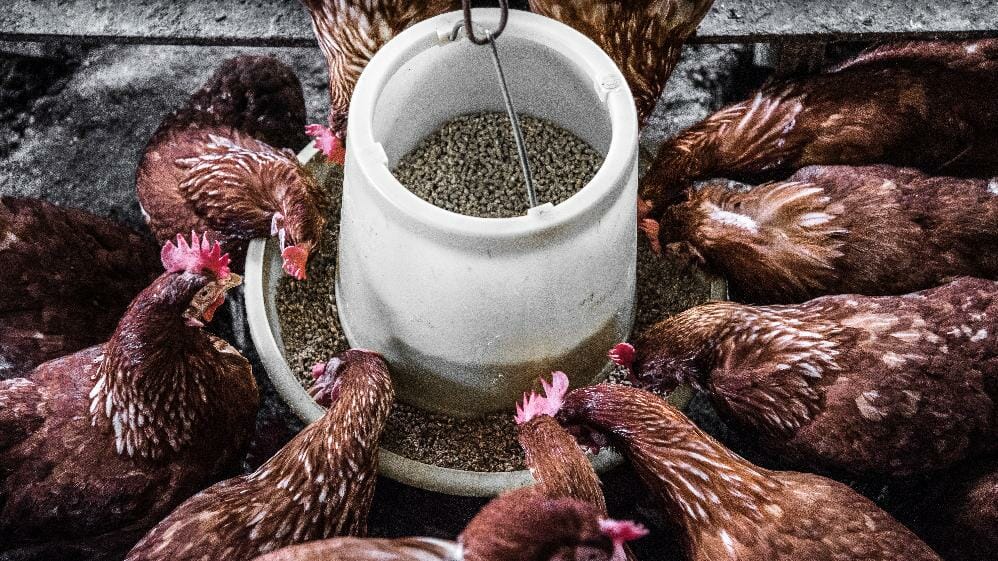In my ongoing quest to delve deeper into the world of livestock tech, it’s become fairly obvious that there is one segment of animal ag that is a bit behind the adoption curve: poultry.
The reality is startling considering the number of poultry processed in the US each year. In 2014 alone, the US poultry industry produced 8.54 billion broilers (meat birds), 99.8 billion eggs, and 238 million turkeys. And in 2018, Americans ate a record 93 pounds of chicken per person, according to the USDA, with the data showing that poultry consumption overall is rising. Even wilder, the average American eats an estimated 17,653 chicken wings in his or her lifetime alone, according to a study by OnePoll commissioned by Moore’s Marinades & Sauces.
So, what’s the deal?
“Poultry is an industry where improvements lead to savings in the realm of 1/10 of a cent per pound. It looks less interesting than the dairy industry for instance, where the value of a single cow is calculated in thousands of dollars,” Caroline Forest, chief sales & marketing officer at Canadian poultry tech company Intelia, tells AFN. The company launched in 1999 as a controller manufacturer for livestock application, primarily in the poultry industry.
“That’s an asset you want to maximize and it is easier for technology companies to demonstrate quickly a solid return on investment. In the poultry industry, to calculate an annual return on investment you need to add fractional savings over an average of five different flocks that will all be subjected to different conditions, i.e., seasons, feed ingredients, etc. The variables are daunting.”
This is the reason why so many of Intelia’s clients tell Forest that the last true invention in the industry was the nipple drinker. Producers were initially skeptical that clean water could have a measurable impact on yield and production costs, but once the idea was proven at scale, it only took a decade for the seemingly simple device to become industry standard. Today, poultry producers perceive more risks, which contributes to the longer adoption timeline.
Despite the uphill battle, Intelia started diversifying its operations in 2014 to explore innovations like IoT devices and sensors for data collection on the farm as well as for analytics and AI. Poultry houses with tens of thousands of birds can be labor-intensive, offering countless pain points for entrepreneurs to address.
Intelia’s customers consist of large agri-groups called integrators that subcontract the production process to farmers. The integrator provides the feed, birds, medications, and vaccines to farmers, who are paid on a contractual basis. Tyson Foods, Pilgrim’s Pride, Sanderson Farms, Perdue Farms, and Koch Farms are a few of the biggest integrators in the poultry game.
Integrators exercise serious control over how their birds are grown, likely due to the fact that 60% of the production cost of a pound of chicken tied to activities happening at the farm during the rearing of the birds. Intelia’s tools aim to provide its customers with an accurate, real-time picture of what is happening at the farm, as well as uniquely powerful data analytics and artificial intelligence tools to support better decision making that leads to savings.
“Controlling equipment in a poultry house was becoming a commodity and we could see that production was getting increasingly complex for growers, especially with the arrival of antibiotic-free production,” Forest says. “They needed help to stay on top of performance as their margin for error was shrinking and timely action was becoming critical. Yet, they mostly relied on historical data from past production to inform them about their current performance.”
Poultry Tech Summit
Still, proof of concept and a clear value proposition are major roadblocks to the proliferation of technology in poultry production. In a few weeks, I’ll be attending the second annual Poultry Tech Summit in Atlanta, Georgia, to learn more about the state of poultry tech.
Intelia will also be attending — as a talent scout.
“We are looking forward to exploring proof of concept for some of the new startups that have been on our radar for some time now. We’ve been watching emerging technology for several years as we are always on the lookout for new data streams to feed our own analytics and AI tools,” Forest explains. “Things like sound and image are of interest, as well as predictive health diagnostic tools.”
The conference also provides an opportunity to network and connect, which is pivotal to the success of poultry tech adoption in her view. Multi-platform collaboration is the key to ensuring that producers reap the greatest benefit from available innovations. Networking may also help stakeholders in the space separate real value from fairy tales. Many new technologies focused on data are not yet past the large-scale proof of concept stage, by her account.
“Small startups don’t necessarily have the budget to get noticed on a giant tradeshow floor featuring 1,150 exhibitors. Even mainstream agtech events tend to be dominated by solution providers for the crop and dairy industries. The offer related to livestock production, and poultry especially, is nearly invisible,” she explains. “For industry players that want to stay up to date on the latest technology trends that could provide them a leading edge in their business, the Poultry Tech Summit showcases those trends better than any other event.”
Consumer are getting pickier
The industry may not have a choice considering the increasing demand for a different kind of chicken on their plates. From cage-free systems to a reduced dependence on antibiotics, poultry producers and integrators are facing a pickier market that’s eating more chicken every year.
“Responding to these consumer demands brings new challenges for producers, as they make chicken rearing more complex than before. Take antibiotic use for instance. If you antibiotic-free chicken, your error margin to detect a health issue has decreased dramatically. You must be able to detect early, or even prevent entirely, the onset of disease because you will not be able to use antibiotics to treat the birds,” Forest warns. “This requires a level of attention to detail that many growers are unable to provide, either from lack of time or lack of knowledge to analyze accurately the situation building up. Skilled farm labor, well versed in poultry health, is not easy to find.”
But that’s precisely where poultry tech may find a more stable footing in the industry. The lack of reliable and consistent labor in other areas of agriculture has led to innovations like weed picking robots that have the added benefit of generating real-time data and analytics. This could parlay into early-warning mechanisms for poultry disease before the problem has spread too far.
FarmWise recently launched an AI-powered weeding robot to address labor shortages in the produce industry, for example, and countless companies like Lely offer automated milking machines to streamline the arduous task of multi-day milkings. Pharm Robotics is even automating dairy cow vaccinations and fertility shots. California’s government recently backed an initiative to reduce dairy-related livestock emissions by constructing a pipeline to transport biogas produced in on-farm digesters.
The beef industry has seen an uptick in data management and animal health startups like Performance Livestock Analytics, which provides a cloud-based platform to help producers measure variables that are directly tied to financial performance like feed. Wyoming is exploring blockchain to help beef producers get more dollars for their good management practices while Cargill created a remote control herding robot to improve worker safety in feedlots.
When it comes to pork, Indiana recently hosted the Boehringer Ingelheim (BI) has developed an African Swine Fever diagnostic test kit to support farmers and diagnostic laboratories. It includes educational tools like an app to help assess biosecurity on the farm. SoundTalks is a digital monitoring tool that veterinarians and pork producers place in barns that runs in the background using algorithms to monitor respiratory distress. It can detect even the slightest alterations in pig sounds, such as changes in coughing patterns.
And earlier this year, the National Pork Board hosted the first-ever Swine Innovation Summit alongside the Forbes AgTech Summit. Last year, the NPB partnered with Californian venture firm SVG Partners on its new MidWest THRIVE Accelerator program.
The only poultry tech startup that I have covered in the five years that I’ve been reporting for AFN is French poultry startup Tibot Technologies that recently raised a €3 million ($3.3 million) investment round for its robots that roam around poultry houses and encourage birds to move for better health.
The analogousness of pain points in other livestock industries to similar problems in poultry only brings me back to my original question, however.
Why isn’t there more pervasive technological innovation and adoption in poultry production?
“The time it takes the industry to evaluate new technology is the biggest challenge. Observers will often say that it is because the industry is ‘conservative’ and technology-averse’ but that is not our take,” Forest explains.
“Take the auto-steering tractor: farmers in the crop industry have embraced that technology long before it was even discussed in the automobile industry. Most tractors now are equipped with that technology and it is as common as air conditioning. The agricultural market is not technology averse, it simply hates spending money on something that has not proven its claims. So they take the time to evaluate new products and services. New does not equal better for them especially in poultry where the numbers are so big the investment needed to deploy a new technology across the board in any organization is significant. The evaluation will be proportional to that investment.”




